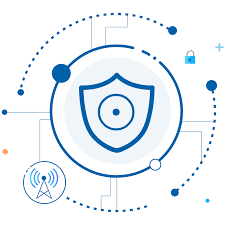Enhancing Network Security with a GTP Firewall
In today’s digital age, mobile network security is more critical than ever. As mobile data traffic continues to surge, mobile operators face the daunting task of protecting their networks from a myriad of security threats. One of the key components in securing mobile networks, especially in 4G LTE and 5G environments, is the GTP (GPRS Tunneling Protocol) firewall. This blog delves into the importance of GTP firewalls and how they play a crucial role in safeguarding mobile network infrastructure.
Understanding GTP and Its Vulnerabilities
GTP is a protocol used in mobile networks to carry user data and control messages across different network nodes. It operates in three versions:
- GTP-C (Control Plane): Manages signaling messages between network elements.
- GTP-U (User Plane): Transports user data between the mobile device and the network.
- GTP' (Prime): Used for charging data transport.
While GTP is essential for the functioning of mobile networks, it also presents several security vulnerabilities:
- Unauthorized Access: Without proper security measures, unauthorized users can exploit GTP to gain access to the network.
- Data Interception: GTP traffic, if not adequately protected, can be intercepted, leading to data breaches.
- Denial of Service (DoS) Attacks: Attackers can flood the network with malicious GTP messages, disrupting services.
- IP Spoofing and Injection: Malicious actors can inject or spoof IP addresses to bypass security controls.
The Role of a GTP Firewall
A GTP firewall acts as a robust security barrier, designed to protect mobile networks from threats associated with GTP traffic. Here’s how a GTP firewall enhances network security:
1. Traffic Inspection and Filtering
- Deep Packet Inspection (DPI): GTP firewalls perform DPI to scrutinize GTP messages and identify any malicious or anomalous traffic.
- Protocol Validation: They validate GTP messages against protocol standards to detect and block malformed or unauthorized messages.
2. Access Control
- Whitelist and Blacklist: Operators can configure whitelists and blacklists to allow or block traffic from specific IP addresses or network elements.
- User Authentication: GTP firewalls enforce strict authentication mechanisms to ensure only legitimate users can access the network.
3. Anomaly Detection
- Behavioral Analysis: They monitor network traffic for unusual patterns that may indicate a security threat.
- Threshold Alerts: The firewall generates alerts when traffic exceeds predefined thresholds, signaling potential DoS attacks or other anomalies.
4. Rate Limiting and Throttling
- Traffic Throttling: To mitigate DoS attacks, GTP firewalls can limit the rate of incoming GTP messages, ensuring network resources are not overwhelmed.
5. Logging and Reporting
- Comprehensive Logging: GTP firewalls maintain detailed logs of all GTP traffic, which are crucial for post-incident analysis and forensic investigations.
- Real-Time Reporting: They provide real-time reports and dashboards, allowing operators to monitor the security status of their network continuously.
Implementing a GTP Firewall: Best Practices
To maximize the effectiveness of a GTP firewall, mobile operators should adhere to the following best practices:
1. Regular Updates and Patching
- Firmware and Software Updates: Ensure the GTP firewall is always updated with the latest firmware and software patches to protect against new vulnerabilities.
2. Comprehensive Configuration
- Policy Configuration: Carefully configure security policies to define what traffic is allowed or blocked.
- Custom Rules: Develop custom rules to address specific threats and use cases relevant to your network.
3. Continuous Monitoring
- Real-Time Monitoring: Continuously monitor GTP traffic and firewall performance to detect and respond to threats promptly.
- Anomaly Detection Tools: Use advanced tools and analytics to identify and mitigate potential security incidents in real-time.
4. Training and Awareness
- Operator Training: Train network operators on the latest security threats and how to manage and configure the GTP firewall effectively.
- Awareness Programs: Conduct regular security awareness programs to keep staff informed about emerging threats and best practices.
Conclusion
In the rapidly evolving landscape of mobile communications, securing GTP traffic is paramount for protecting mobile network infrastructure. A GTP firewall is an essential tool in the operator’s security arsenal, providing critical defenses against unauthorized access, data breaches, and other malicious activities. By implementing robust GTP firewall solutions and adhering to best practices, mobile operators can ensure the integrity, confidentiality, and availability of their networks, ultimately delivering a secure and reliable service to their users.
Stay informed about the latest in network security by following our blog. For personalized advice or more information on GTP firewall solutions, feel free to reach out to our security experts.




Comments
Post a Comment